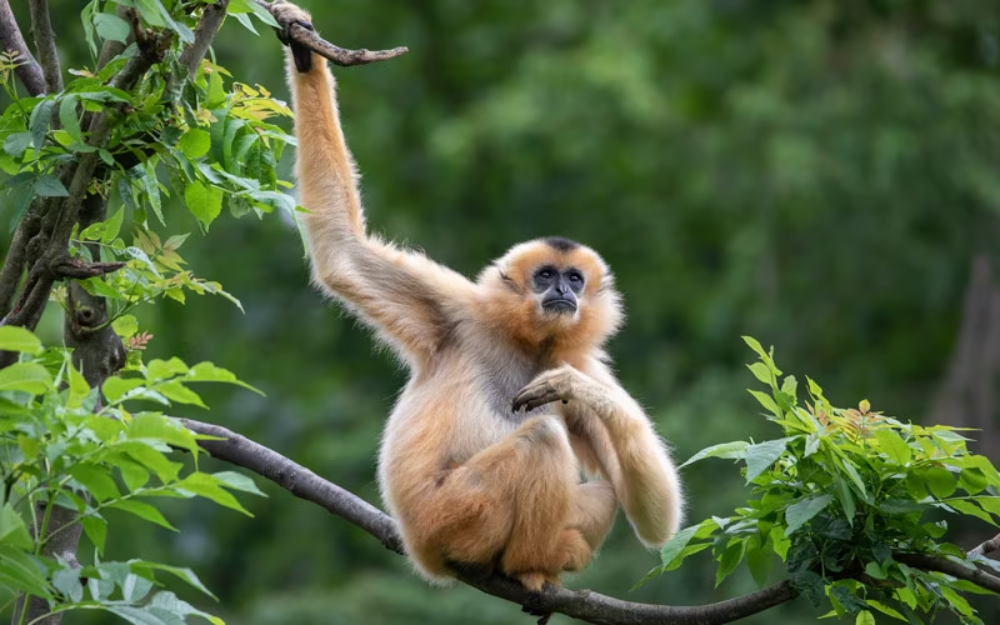The Hainan Gibbon is a unique species, endemic to Hainan Island, often referred to as the “Galápagos of the East” due to its rich biodiversity. Once widespread across the island’s forests, rampant deforestation and habitat fragmentation have confined these gibbons to a tiny pocket of forest in Bawangling National Nature Reserve.
These gibbons are true acrobats of the canopy, swinging effortlessly from branch to branch with their long arms. Their haunting calls echo through the trees, marking their territory and maintaining social bonds within their small family groups. Yet, their cries now carry a sense of urgency, as their numbers dwindle and their habitat diminishes.
The Perils of Progress
The primary threat facing the Hainan Gibbon is habitat loss. As China’s economy has surged, so too has the demand for agricultural land, timber, and development. Forests that have stood for millennia are cleared at an alarming rate to make way for plantations, infrastructure, and urban expansion. Fragmentation of their habitat isolates gibbon populations, reducing genetic diversity and making them more vulnerable to disease and other environmental pressures.
Illegal logging exacerbates this crisis, with poachers targeting the valuable hardwoods that form the gibbons’ home. Hunting and trapping also take their toll, as these primates are sometimes captured for the illegal pet trade or killed for bushmeat.

Conservation Efforts: A Beacon of Hope
Despite the bleak outlook, there is hope for the Hainan Gibbon. Conservation efforts led by local and international organizations are striving to turn the tide and secure a future for this critically endangered species.
Bawangling National Nature Reserve serves as a crucial stronghold for the gibbons, providing protected habitat where they can thrive. Conservationists work tirelessly to monitor gibbon populations, study their behavior, and implement measures to safeguard their habitat.
Community engagement is another vital aspect of conservation efforts. Collaborating with local communities to raise awareness about the importance of biodiversity and the need to protect the gibbons’ habitat fosters a sense of stewardship among those who live alongside these endangered primates.
The Road Ahead
While there is a progress, significant challenges remain in the fight to save the Hainan Gibbon. Continued habitat loss, coupled with the looming threat of climate change, puts immense pressure on these already fragile populations. Sustainable land-use practices, strengthened law enforcement against illegal logging and hunting, and innovative conservation strategies are essential to securing a future for the gibbons.
International cooperation is also critical. By raising awareness on the global stage and garnering support from governments, NGOs, and concerned individuals worldwide, we can amplify conservation efforts and ensure the survival of this unique primate species.
The fate of the Hainan Gibbon serves as a poignant reminder of the fragility of our planet’s biodiversity. As we stand at the crossroads of history, we must choose to act decisively to preserve not only the symphony of the rainforest but also the intricate web of life that sustains us all. The survival of the Hainan Gibbon is not just a matter of conservation but a testament to our commitment to safeguarding the natural world for future generations.









